Dawncaster
Airman 1st Class
- 110
- Dec 23, 2013
There were several types of official performance documents for U.S. military aircraft.
PD = Performance Data (Early WWII Era)
ACP = Airplane Characteristics and Performance (WWII Era, lasted into about 1948)
SAC = Standard Aircraft Characteristics (Began being used around 1948, and as time went on, they became more and more detailed)
In the case of F4U-4, the F4U-4 SAC was the latest edition




but in my view, there are some missing parts. (ex - military power performances).
So I decided to cross-check these with other documents for fill them up.
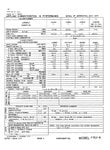
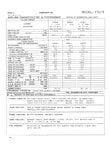
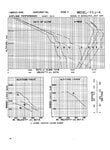
First, I saw another official performance, the 1946 ACP of F4U-4 but I could see that it was too rough. Engine charts with margins of error and twisted performance curves at high altitudes have made it feel that the F4U-4 has yet to have enough data to establish officail performance. F4U-4's production inspection trials ended in 1948, so it's not so unusual.
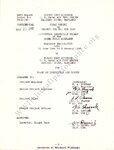
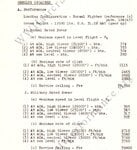
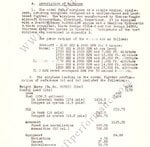

On the other hand, final report for production inspection trials of the F4U-4 gave more answers. It's performance in normal power and engine ratings were almost identical to that of the SAC. It seems that both models conform to the Navy's standard with two pylons. This can considerably fill the missing parts of the SAC.

Another document is the NACA report - 'Measurements in Flight of the Flying Qualities of a Chance Vought F4U-4 Airplane TED No. NACA 2388'. The performance of the F4U-4 SAC was much higher than that of the F4U-4 ACP, even considering the error, which means more horsepower. It appears that the water injected R-2800-18W was able to achieve up to 2,800 horsepower with 115/145 fuel, similar to other C-series R-2800s. At least in the 1947 NACA test
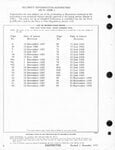
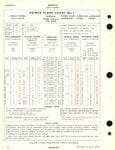
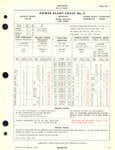
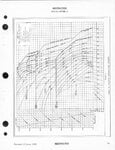
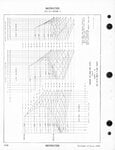
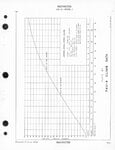
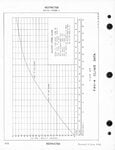
Next was 1952 Pilot's Handbook for F4U-4s, It gave me a lot of confusion. Engine charts are still incomplete and R-2800-42W chart seems not based on flight tests, It was as if it only reflected a decrese in the critical altitude caused by higher manifold pressure. also there were mismatchs in supercharger shift altitudes between engine calibration curve, power plant charts, climb datas. each chart was ignoring others stated altitude. In addition, the manual stated the R-2800-18W did not cleared to 115/145 fuel, and the R-2800-42W was an engine made for it.
However, as a result of contrasting with the list of revised page issued, the confusion has somewhat disappeared. It was re-visioned in 1947-1948 mostly and only 3 pages were later re-revisioned that were not related to engine performance. and the introduction to the engines has never been revised. compared with the F4U-1 case, which has been continuously revised engine chart and others for years with constant test flights, it appears that there have been no more projects since one revision after F4U-4's final report for production inspection trials project terminated. In my view, Perhaps the Navy was no longer interested in the F4U-4's higher performance.
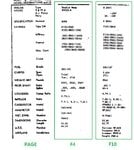
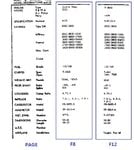

Anyway, the R-2800-42W was not just for the use of 115/145 fuel, It was certainly improved engine. It had a higher critical altitude even at higher manifold pressures due to improved altitude performance. Perhaps for the reasons mentioned above, the production inspection trials project for F4U-4 with R-2800-42W were not likely to have been conducted and there was no further revision in practice. Maybe that's what created the gap between manual and actual. I suspected that the performance of the F4U-4 SAC was R-2800-42W, but cross-check using final report for production inspection trials of the F4U-4 and P&W Wasp index found that it was not.
Also, the climb charts at weight of 12580 lbs with two pylons and one empty drop tank were a mystery to me. Its supercharger shift altitude is much higher than either the power plant chart or the engine calibration curve, and also the military power curve and normal power curve shift at the same altitude. Because I have low technical knowledge in this part, maybe there's something I missed. but from my point of view, the shift was so late that it made some loss in performance.

Last was Vought figures, It contained the F4U-4's performances of both R-2800-18W operating at 60"hg and 70"hg. According to it, ACP's performance appears to be 60"hg and SAC's 70"hg. So I was able to get what I could fill the missing part of the SAC from 70"hg data. although the NACA report showed 2,800 horsepower, on the F4U-4 two-speed supercharger it would be the highest output available in the neutral blower stage. But since the Combat curve of the SAC did not include neutral gear, what is important is the output from the low and high gear. according to the document, it was 2650 BHP at low gear and 2400 BHP at high gear. Critical altitudes appear to be nearly 8,000 ft and 16,000 ft, but not certain due to original image's poor condition. Perhaps this 2650 BHP was similar to 2135 BHP in F4U-1. The F4U-1 was initially not included in official performance because it was not cleared, although 2250 BHP was already available and actually used. Now, I think roughly gathered the ingredients.
The result of filling in the missed part of SAC was as follows.

there was no further result from the highest performance shown by the SAC, It was to fill the missing parts and verify the performance. the reduction in the speed of normal and military power when the pylons are removed applied with the same percentage as the Combat power. However, for climb performances, it was impossible to predict because there was no attached information about the climb performance without pylons.
In conclusion, the performance of the F4U-4 SAC appears to have come under virtually equivalent conditions to the production inspection trials, which seems reliable. but at what period? It's remains a question. According to SkyChimp, the F4U-4 seems to have used 115/145 fuel to achieve its highest performance in World War II, But it had never been cleared for official performance before the war ended, and Vought's data showed it's performance wasn't as good as the SAC. So I think the official performance of this SAC was the best that can be achieved with standard F4U-4.
PD = Performance Data (Early WWII Era)
ACP = Airplane Characteristics and Performance (WWII Era, lasted into about 1948)
SAC = Standard Aircraft Characteristics (Began being used around 1948, and as time went on, they became more and more detailed)
In the case of F4U-4, the F4U-4 SAC was the latest edition
but in my view, there are some missing parts. (ex - military power performances).
So I decided to cross-check these with other documents for fill them up.



First, I saw another official performance, the 1946 ACP of F4U-4 but I could see that it was too rough. Engine charts with margins of error and twisted performance curves at high altitudes have made it feel that the F4U-4 has yet to have enough data to establish officail performance. F4U-4's production inspection trials ended in 1948, so it's not so unusual.



On the other hand, final report for production inspection trials of the F4U-4 gave more answers. It's performance in normal power and engine ratings were almost identical to that of the SAC. It seems that both models conform to the Navy's standard with two pylons. This can considerably fill the missing parts of the SAC.
Another document is the NACA report - 'Measurements in Flight of the Flying Qualities of a Chance Vought F4U-4 Airplane TED No. NACA 2388'. The performance of the F4U-4 SAC was much higher than that of the F4U-4 ACP, even considering the error, which means more horsepower. It appears that the water injected R-2800-18W was able to achieve up to 2,800 horsepower with 115/145 fuel, similar to other C-series R-2800s. At least in the 1947 NACA test







Next was 1952 Pilot's Handbook for F4U-4s, It gave me a lot of confusion. Engine charts are still incomplete and R-2800-42W chart seems not based on flight tests, It was as if it only reflected a decrese in the critical altitude caused by higher manifold pressure. also there were mismatchs in supercharger shift altitudes between engine calibration curve, power plant charts, climb datas. each chart was ignoring others stated altitude. In addition, the manual stated the R-2800-18W did not cleared to 115/145 fuel, and the R-2800-42W was an engine made for it.
However, as a result of contrasting with the list of revised page issued, the confusion has somewhat disappeared. It was re-visioned in 1947-1948 mostly and only 3 pages were later re-revisioned that were not related to engine performance. and the introduction to the engines has never been revised. compared with the F4U-1 case, which has been continuously revised engine chart and others for years with constant test flights, it appears that there have been no more projects since one revision after F4U-4's final report for production inspection trials project terminated. In my view, Perhaps the Navy was no longer interested in the F4U-4's higher performance.


Anyway, the R-2800-42W was not just for the use of 115/145 fuel, It was certainly improved engine. It had a higher critical altitude even at higher manifold pressures due to improved altitude performance. Perhaps for the reasons mentioned above, the production inspection trials project for F4U-4 with R-2800-42W were not likely to have been conducted and there was no further revision in practice. Maybe that's what created the gap between manual and actual. I suspected that the performance of the F4U-4 SAC was R-2800-42W, but cross-check using final report for production inspection trials of the F4U-4 and P&W Wasp index found that it was not.
Also, the climb charts at weight of 12580 lbs with two pylons and one empty drop tank were a mystery to me. Its supercharger shift altitude is much higher than either the power plant chart or the engine calibration curve, and also the military power curve and normal power curve shift at the same altitude. Because I have low technical knowledge in this part, maybe there's something I missed. but from my point of view, the shift was so late that it made some loss in performance.
Last was Vought figures, It contained the F4U-4's performances of both R-2800-18W operating at 60"hg and 70"hg. According to it, ACP's performance appears to be 60"hg and SAC's 70"hg. So I was able to get what I could fill the missing part of the SAC from 70"hg data. although the NACA report showed 2,800 horsepower, on the F4U-4 two-speed supercharger it would be the highest output available in the neutral blower stage. But since the Combat curve of the SAC did not include neutral gear, what is important is the output from the low and high gear. according to the document, it was 2650 BHP at low gear and 2400 BHP at high gear. Critical altitudes appear to be nearly 8,000 ft and 16,000 ft, but not certain due to original image's poor condition. Perhaps this 2650 BHP was similar to 2135 BHP in F4U-1. The F4U-1 was initially not included in official performance because it was not cleared, although 2250 BHP was already available and actually used. Now, I think roughly gathered the ingredients.
The result of filling in the missed part of SAC was as follows.
there was no further result from the highest performance shown by the SAC, It was to fill the missing parts and verify the performance. the reduction in the speed of normal and military power when the pylons are removed applied with the same percentage as the Combat power. However, for climb performances, it was impossible to predict because there was no attached information about the climb performance without pylons.
In conclusion, the performance of the F4U-4 SAC appears to have come under virtually equivalent conditions to the production inspection trials, which seems reliable. but at what period? It's remains a question. According to SkyChimp, the F4U-4 seems to have used 115/145 fuel to achieve its highest performance in World War II, But it had never been cleared for official performance before the war ended, and Vought's data showed it's performance wasn't as good as the SAC. So I think the official performance of this SAC was the best that can be achieved with standard F4U-4.
Last edited:
